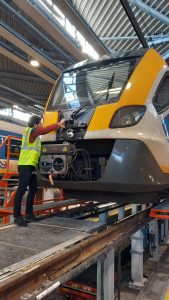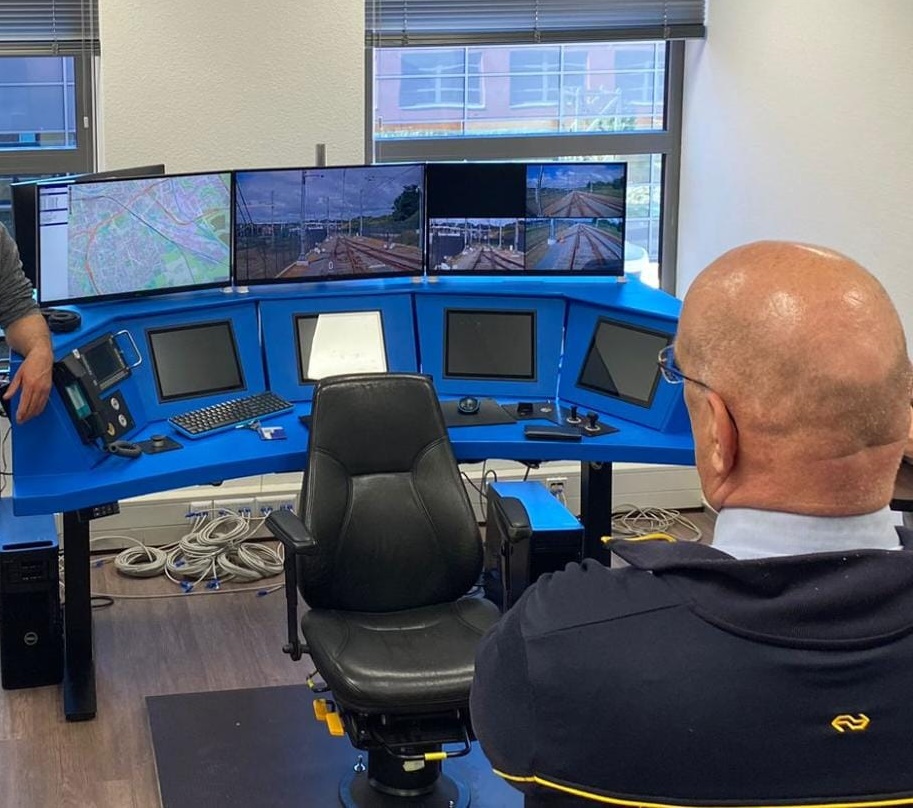28 May, 2023 | Partners
NS’s Automatic Train Operation
At NS, we innovate on a daily basis: we continuously develop ourselves to become and remain ready for tomorrow’s train journey. One of the innovation projects at NS is about Automatic Train Operation (ATO). We interviewed a project manager from NS Techniek (NS Technology) to learn about what ATO stands for, what it entails and what we could learn from it.
What does ATO stand for?
ATO is short for Automatic Train Operation. Simply stated, it focuses on different scenarios of automating the operation of the train. One of the scenarios is the use of technological systems that support the train driver as an autopilot; in another scenario a shunting procedure is carried out remotely by a train driver in a remote cabin. At NS, we are currently performing research in how the different technologies and scenarios perform and whether we would like to proceed with future research.
Why is ATO relevant?
Innovation is always relevant! We can say that experimenting with technologies that are fairly new to our organization and this setting, provides us with many insights. Not only the technology itself, but also the processes surrounding it, and how we handle that as an organization of our size, are insightful. In the end, we don’t have to use all outcomes and all innovations, but these experiences, how we learn, make mistakes and explore with ATO, will also pave the way for future innovations.
ATO might, after research, prove to be a helpful aid to our organization. Automizing (part of) the shunting operation, might help us to drive train more efficiently and that takes the pressure off of our operational staff. For example, shunting currently involves a significant amount of walking. If a train could be driven from a stabling yard to the main platform from a remote operation center, the time used for walking could be used differently. Remote shunting might also prove to be beneficial in terms of working conditions and safety.
Additionally, our rail network is one of the most dense rail networks in the world, and we want to have the ability to welcome a continuously growing number of passengers. Automatic train operation may help us by providing support in maneuvering this crammed rail network more efficiently. This can for example be done by tweaking and refining the accelerating, braking and speed accuracy of the train. If we can coordinate this well and link the data of all trains, trains could amongst other things drive closer together. This will create more space in our rail network, which could mean a more efficient train schedule and a shorter traveling time for our passengers.
What’s coming up for ATO?
The coming period we will focus on research, in which we verify and validate our findings with test drives. We will proceed with testing autopilot functionalities more extensively. Furthermore, with the Provincie Groningen and ProRail, we will be testing remote train operation in shunting procedures for the first time.
Additionally, we will be focusing on the human side of ATO: what is the interaction of the tested systems with our employees? We pay attention to all kinds of signals such as the alertness of the train driver with automatic operation, the ease of use, the work satisfaction and fulfillment, and much more. The ‘human factors’ as we call this, are of crucial importance of this project: don’t forget about your people.
We also made a start with engaging more and more of our employees in ATO. We are actively involving the first groups of employees and stakeholders in the content of ATO and we tell them the background story while already asking for their feedback and suggestions. The first reactions are overall positive. Although ATO is still in the test phase, the employees that hear about it are curious to see what it might bring them. And so are we.
What can we learn from such an innovation as ATO?
We notice how highly important it is to engage as many people as early on in the process as possible. We do not yet know the outcomes of the tests we perform with ATO and we do not yet know how and if ATO will be implemented. Even then, transparency is important in making people more involved and enthusiastic. The questions they might have or the experiences they share, will only help us sharpen the focus of our project.
What we also learn is that innovating itself is fun. We have to innovate to be ready for the future, but apart from having to do it, it is a great learning experience. We research and experiment with NS internally, but we also do this with external partners. Even on a European level we are figuring out how we can best approach the future of the rail sector together. That shows that innovating is an overarching practice. It’s something we do together.
We will be carrying out many test drives in the coming period of time as part of our research project in which we hope to learn a lot more about automatic train operation. You might read more about it soon.











